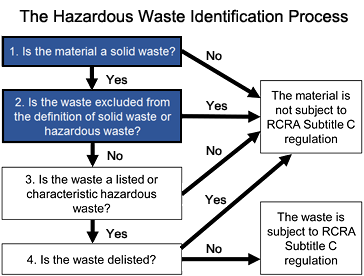3 Simple Techniques For Reclaim Waste
3 Simple Techniques For Reclaim Waste
Blog Article
The Greatest Guide To Reclaim Waste
Table of ContentsThe Definitive Guide to Reclaim WasteThe Facts About Reclaim Waste UncoveredSome Known Incorrect Statements About Reclaim Waste Not known Facts About Reclaim WasteThe Basic Principles Of Reclaim Waste
Explore the kinds, incidents, and forms of fluid waste. Residential sewage waste refers to the waste and products from a household septic system. This sort of waste is created by human beings in houses, colleges, and various other buildings. This only includes septic tanks that have a drainpipe field. The appropriate administration and disposal of residential sewage waste call for liquid waste to be moved to a sewage therapy plant where the correct techniques and equipment are related to purify and get rid of waste.
Commercial waste often includes prospective hazards, such as flammable products or a mixture of liquid and strong waste products, and needs an advanced and in-depth disposal procedure. The disposal of industrial waste typically involves the filtering of waste prior to transportation to make sure secure and proper disposal. Industrial waste is created from byproducts and overflow of industrial processes and manufacturing.
This type of waste can not make use of the same sewage administration transportation or procedures as septic or business fluids. The commercial waste management procedure needs the inspection and screening of liquid waste before it undergoes the disposal process (liquid waste disposal melbourne). Overflow waste is the liquid waste that originates from runoff and excess stormwater in extremely populated locations or cities
Drainage waste can create contamination and flooding if not handled properly. Making sure proper waste monitoring can protect against catastrophes and lower ecological harm.
Some Known Facts About Reclaim Waste.
Contact PROS Services today to discover our waste management and disposal services and the proper means to take care of the liquid waste you generate.
(https://forums.hostsearch.com/member.php?271151-reclaimwaste1)This so-called 'wastewater' is not just an important resource however, after therapy, will certainly be released to our land, waterways or the sea. Used water from commodes, showers, baths, kitchen area sinks, washings and commercial procedures is known as wastewater.

water made use of to cool down equipment or clean plant and equipment). Stormwater, a form of wastewater, is runoff that flows from farming and metropolitan locations such as roofings, parks, gardens, roadways, paths and gutters right into stormwater drains, after rain. Stormwater moves unattended straight to regional creeks or rivers, at some point reaching the sea.
An Unbiased View of Reclaim Waste
In Queensland, many wastewater is dealt with at sewer treatment plants. Wastewater is moved from domestic or industrial sites with a system of drains and pump stations, known as sewerage reticulation, to a sewage treatment plant. Regional federal governments develop, keep and run most sewer therapy plants. Operators are accredited under the Environmental Management Act 1994 to release cured wastewater at an acceptable ecological requirement into waterways.
The Division of Natural Resources recommends city governments concerning handling, operating and keeping sewage systems and therapy plants. In unsewered locations, regional governments might need homeowners to install individual or household sewer therapy systems to treat residential wastewater from commodes, cooking areas, washrooms and washings. The Department of Natural Resources authorises the usage of family systems when they are verified to be efficient.
The majority of stormwater obtains no therapy. In some new neighborhoods, therapy of some stormwater to get rid of trash, sand and gravel has begun making use of gross contaminant catches. Wastewater therapy occurs in 4 phases: Gets rid of solid issue. Larger solids, such as plastics and various other items wrongly discharged to sewage systems, are gotten rid of when wastewater is passed with screens.
Uses tiny living microorganisms recognizes as micro-organisms to break down and eliminate remaining dissolved wastes and great particles. Micro-organisms and wastes are incorporated in the sludge.
Little Known Facts About Reclaim Waste.
Nutrient elimination is not offered at all sewer therapy plants due to the fact that it requires expensive specialised equipment. Clear fluid effluent produced after therapy may still have disease-causing micro-organisms - liquid waste removal.

The majority of wastewater streams into the sewerage system. Under the Act, neighborhood governments carry out authorizations click for more and licences for eco appropriate activities (ERAs) including wastewater releases that may have a neighborhood influence.
Everything about Reclaim Waste
Or else, samples are taken for research laboratory analysis. Often numerous examinations are required to develop the levels of each of the different toxins such as oils, heavy metals and pesticides in water. Surveillance gives factual information about water high quality and can validate that permit conditions are being satisfied. The details gotten through monitoring offers the basis for making water high quality choices.
Report this page